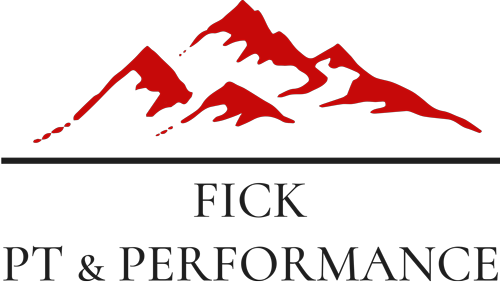While feeling tired is arguably a common symptom that most competitive athletes experience due to ongoing and intense physical training, it is important to know that some athletes may be dealing with Relative Energy Deficiency in Sport (RED-S). RED-S is a condition that happens when the amount of calories being consumed by the body is not sufficient for the amount of exercise the body is performing. This caloric deficit may be a result of both intentional and unintentional underconsumption of calories.
For female athletes who menstruate, when the body perceives a large gap between exergy expenditure and energy intake, estrogen levels in the body drop and menstrual periods often cease. Normal estrogen levels are needed to maintain calcium content in bone. When estrogen levels drop, bones become more porous, resulting in osteopenia, and eventually, osteoporosis. Recent studies have shown that athletes today are very susceptible to RED-S. Pressure to maintain incredibly low body weight (whether from social media, self, peers, or others), high training demands, and pressure to perform are typically behind RED-S, and these psychological factors often have physical consequences.
What Are the Warning Signs?
Physical Signs and Symptoms:
- Decreased sports performance
- Amenorrhea or irregular menstrual cycles
- Iron deficiency
- Frequent colds/illnesses
- Dehydration
- Gastrointestinal problems
- Cardiac abnormalities
- Stress fractures (and overuse injuries)
- Significant weight loss
- Muscle cramps, weakness, or fatigue
- Dental and gum problems
Psychological and Behavioral Signs and Symptoms:
- Anxiety, depression, or mood changes
- Claims of “feeling fat” despite being thin
- Exercising beyond what is expected or required
- Excessive use of the restroom or use of laxatives/pills
- Unfocused, difficulty concentrating
- Preoccupation with weight and eating
- Avoidance of eating and eating situation

Wondering if you might be suffering from RED-S?
Your physical therapist can use the RED-S CAT screening tool to identify risk factors associated with RED-S, as well as refer you to your primary care or sports medicine physician for further evaluation. In addition to seeing your physician, it is important to meet with a certified nutrition expert to build an individual nutrition plan that addresses your specific dietary and caloric intake needs and to receive supplementation recommendations. Every treatment plan for RED-S should be individualized based on the athlete’s physical and psychological symptoms.
It’s common for athletes with RED-S to worry that increasing calorie intake will negatively affect their body and athletic performance, when, in fact, the opposite is true. RED-S can be detrimental to physical and mental wellbeing, as well as athletic performance. If you have RED-S, you can develop a treatment plan that will get you back on the right track to perform at high levels while, more importantly, keeping your mind and body healthy.
Prevention is Key
Prevention of RED-S is the best way to stay healthy so you can enjoy participating in your sport. Try these tips:
- Choose an activity that complements your natural body strengths and suits you as an individual.
- Realize your health is more important than competitive success. Taking health risks for a perceived competitive edge will make you lose in the long run.
- Be wary of those who value your competitive success over your well-being.
- According to the NCAA, weight should be de-emphasized as a factor in performance.
- Frequent weigh-ins, weight comments and punitive consequences for weight gain may increase an athlete’s risk for the Triad.
- Appreciate your own healthy, active body. Don’t compare yourself to others, especially those portrayed in the media. Optimal weight for health AND performance is different for everyone.
- Realize the thinnest athletes are not necessarily the fastest or the strongest.
- Think of fuel as the ultimate performance enhancer! Before choosing a weight-loss diet, consult with a nutritionist who can provide personalized recommendations to promote a healthy weight and boost athletic performance.
- Don’t starve your bones. Part of your fuel mix should include several servings a day of good calcium sources like milk, yogurt, cheese, calcium-fortified juices and soy products. If you are lactose-intolerant, try some of the no-lactose dairy products available. Green leafy vegetables, almonds and beans also have some calcium. People who menstruate who are no longer getting periods are encouraged to consume 1500 mg/day of calcium until the amenorrhea is resolved. The best outcome appears to be achieved with a combination of dietary and supplemental calcium sources. Supplements should also include vitamin D to help increase calcium absorption.
- Be a role model with both your words and actions. Speak up when you hear others making negative comments about weight or body shape. Compliment friends and teammates on their talents and personality, not their looks. Take a positive attitude about fueling yourself and enjoying foods.
References
1. Mountjoy M, Sundgot-Borgen J, Burke L, et al. The IOC consensus statement: beyond the Female Athlete Triad-Relative Energy Deficiency in Sport (RED-S). Br J Sports Med. 2014;48(7):491-497.
2. Statuta SM, Asif IM, Drezner JA. Relative energy deficiency in sport (RED-S). Br J Sports Med. 2017;51:1570-1571.
Have further questions? We would love to help you! Contact us at:
Call or text Fick PT & Performance: 720.480.2866
Book online: www.fickptandperformance.com

